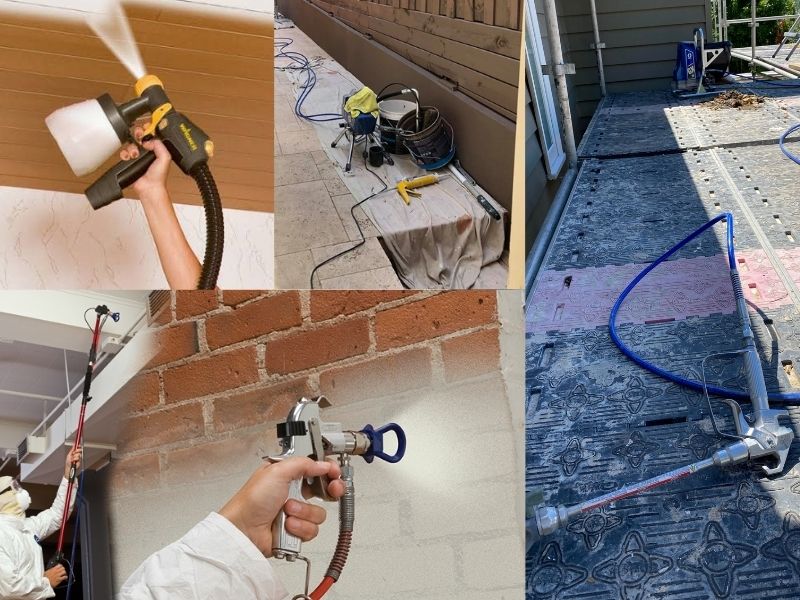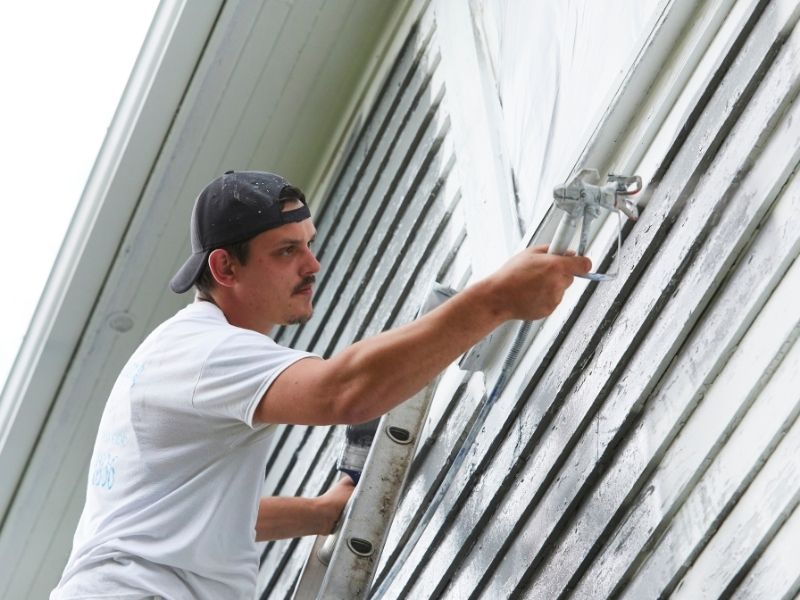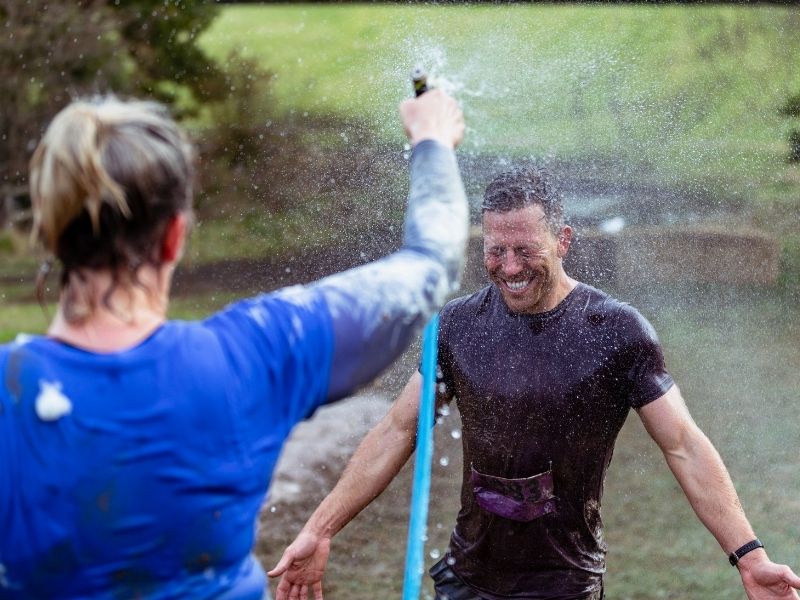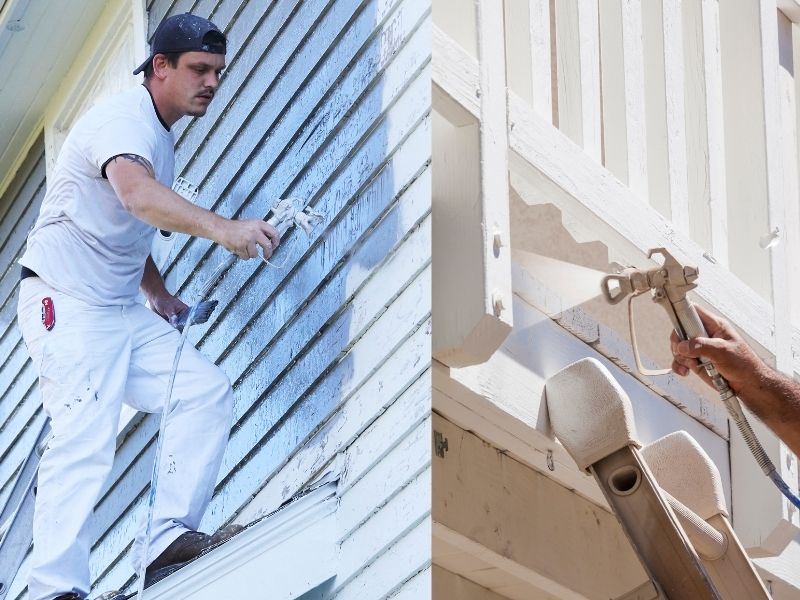Transform Your House Exterior with House Painting
Does the outside of your house need a serious makeover?
You can transform the exterior of your house without spending thousands on professional painters.
Using a spray paint gun, you can achieve a brilliant finish.
At Paintenance Melbourne, customer satisfaction and quality work are our highest priorities.
We love producing excellent painting results for our customers. Our testimonials and 5-star reviews evidence this.
However, if you’re going to spray paint a house exterior yourself, we want you to do it the right way.
Follow these guidelines to achieve the best results.

Choose the Right Tools for Spray Painting
Here is a list of all the tools and materials you’ll need to paint the exterior of your house.
- Spray gun (we use and recommend Graco)
- Exterior Paint
- Two empty buckets for priming sprayer and clean-up
- Safety glasses/goggles
- Hat
- Paint respirator/dust mask
- Gloves
- Painter’s tape
- Drop sheets
- Cleaning rags
- Paint brush
- Roller and tray
- Stirrer
- Water
When you operate spray equipment, always remember safety first. Use all recommended protective gear while you operate a spray gun and ensure good ventilation.

Exterior House Spray Painting Step-by-Step Guide
- Select the spray tip best suited for the paint you are using and the surface to be sprayed (refer to user’s manual).
- Pour paint into the second bucket. Dilute with about 10 percent water. This makes spraying much easier and will give you a fine spray of paint.
- Once you’ve added water to your paint, mix it together using your stirrer. Add more water or more paint until you’re happy with the consistency. Make sure it’s not too runny, or too thick.
- Next, mask and cover up areas such as windows you don’t want painted, using painters’ tape. Cover over or move any nearby garden equipment, fixtures, shrubs, plants, or outdoor furniture. Remove any fittings and fixtures such as outside lights, house numbers or shutters before painting.
- Check to make sure your wall is clean and ready for painting. If there’s any dust or cobwebs present, give it a quick brush down with a broom.
- Once your diluted paint is the right consistency, pour it into your spray gun. The nozzle on the spray gun should be pointing in the direction you want the spray to go.
- To start with, especially if you’re a beginner, choose a flat surface such as the back of the house that won’t readily be seen. Start at the top of the wall and work your way down.
- Spray the paint on any eaves or undersides first. If there are any exposed wood beams, or boards then spray the paint along the direction of the beams. When painting any eaves of the house, a spray gun tip extension is useful. This will allow you to safely spray hard-to-reach areas from your ladder.
- Work in sections as far as you can comfortably reach. Keep the spray tip approximately 12 inches/30 cm from the surface. Spray the outer edges first, ‘banding’ the area that you will spray. For inside corners, aim the spray tip directly into the corner so that the spray fan overlaps both sides. Overlap your spray paint passes by 50%.
- While painting, keep your spray gun an even distance from the wall. Use your whole arm to spray the paint, rather than from your wrist. Watch out for overspray. Don’t spray too close to gutters and windows.
- After you have completed any eaves or overhangs, spray the exterior walls themselves. Cut in around windows and doors first, and then spray the remaining flat areas, overlapping each pass again by 50%.
- When you’ve sprayed your first coat, use a brush and roller. These will be helpful to paint trickier areas, like gutters and windows or the grooves between bricks. Use paint straight from the tin for these areas – not the diluted paint for the spray gun. Pour some paint into a tray then begin rolling. To get a nice even coat, start by rolling ‘W’s onto your wall, then go back over with ‘M’ patterns. Use a paint brush to cut in along the gutter line.
- Once the first coat of paint is dry, change the nozzle on your spray gun to get a finer, more concentrated stream. This will ensure you get into those nooks and crannies the second time. Then apply the second coat and remove your painter’s tape. You’re done!
Clean Up After Your Exterior Spray Painting
- Remove painters’ tape from your trim only after allowing significant time for the paint to dry. This will achieve crisp, clean lines for your paint job.
- Take off any coverings from the immediate surrounds. This might include, for example, garden fixtures, bushes, and plants. Carefully remove all painters’ tape and plastic sheet coverings from windows and door trim.
- Replace any lighting fixtures, house numbers or shutters that you removed prior to painting.
- Clean your airless spray gun after each use. Follow the directions in your user’s manual.
- Return any other items like garden equipment or outdoor furniture etc. to their proper place.
Exterior Spray Painting for the Best Results
Spray painting your house exterior can achieve a very satisfying finish.
As with all other spray-painting jobs, using the right tools, preparation and knowing the right techniques are essential for the best results.
You can totally transform the outside look and presentation of your home. And you will save a lot of money, if not time.
You Can Hire Professionals Instead!
If spray painting your exterior walls is a bit daunting and time-consuming, you have options. You can always leave it to the pros!
Paintenance Melbourne offers you a range of spray-painted finishes for your interior and exterior surfaces.
We use the latest equipment and cutting-edge techniques to ensure an impeccable finish – every time, on time!
Contact us today for a free quote, or to discuss how your next painting job might benefit from our advanced spray-painting services.
Article References:
How to paint your house’s exterior with a spray gun – Bunnings
How to paint the exterior of a house using an airless sprayer – Graco




